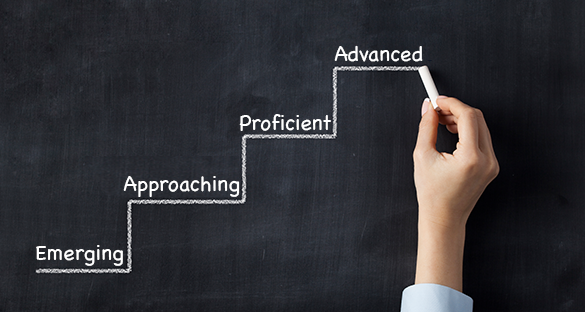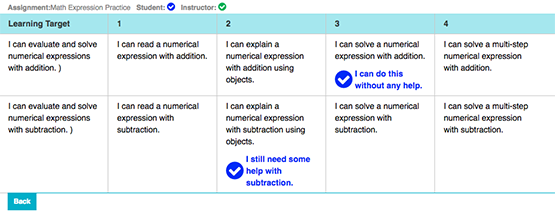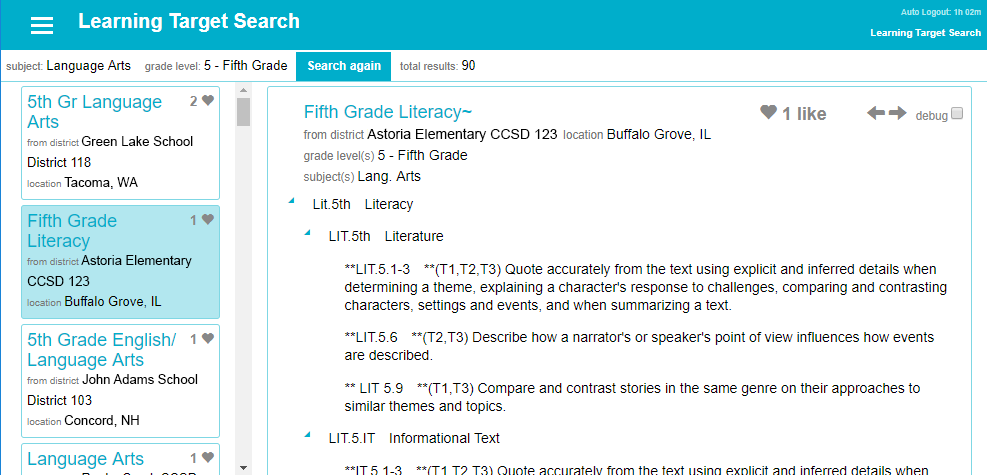Rubrics
An early step in standards-based learning is to write rubrics. Define cognitive steps students progress through to reach learning targets. Teachers think deeply about how students learn, and can plan better instruction and assessment. Rubrics provide a framework for feedback. Students self-assess and have rich conversations with teachers. Teachers learn about standards-based teaching by browsing other educators’ rubrics. Committees cooperate to build rubrics, instruction, and assessments.

BENEFITS
Increase success by using software built for standards-based learning
Teachers think deeply about student learning when writing rubrics
Students understand goals, engage in learning, and take ownership
Improve feedback by creating a framework and shared vocabulary
Students reflect on learning when doing self-assessment
Educators learn by browsing each other’s rubrics
Committees collaborate to build rubrics, assessments, etc.
Build a foundation for standards-based instruction and assessment
Want to Talk?
Request DemoSchool- or District-wide Accounts
Group PricingFEATURES
Teachers write rubrics for standards/learning targets
For each standard/learning target, write a rubric. Define the cognitive steps students progress through to reach the target. Rubrics can be written by individual teachers or committees cooperating to share the workload.
Students view rubrics and better understand learning
Students can see rubrics for each learning target. This allows them to understand the purpose of instruction, and the learning progression to reach the targets. This demystifies the learning process.

Rubrics automatically flow to assignments
As standards-based assignments are created and aligned to learning targets, the rubrics follow. For each learning target added to an assignment, its standards-based rubric is also added to the assignment.

Students complete self-assessment
After completing an assignment, students can self-assess their work. They reflect upon their progress through the rubric and can write free text comments. Afterwards, teachers provide feedback based upon the student’s work and self-perception of skills.

Teachers provide feedback using rubrics
The combination of rubrics, student self-assessment, and teacher feedback helps students understand their skill gaps and make corrections. The specificity and relevance of feedback accelerates learning and moves students forward faster.
Students engage and take ownership
Understanding learning progressions allows students to better receive feedback and engage in their areas of improvement. They can see their efforts result in academic gains. Pursuit of mastery often unlocks intrinsic student motivation.

Teachers can browse other educators’ rubrics
Teachers can learn from other educators teaching the same subject, grade level, or course. They can browse rubrics shared within TeacherEase. It’s easy to view targets, rubrics, assessments, instructional content, etc.

Committees can collaborate to build rubrics
A good transition to standards-based learning takes significant effort, and is often attempted by teams. It's very challenging for an individual teacher to write all the standards-aligned learning targets, rubrics, assessments, and instructional content needed for standards-based instruction. TeacherEase supports groups of educators sharing the work to implement better instructional practices.
Build a foundation for future instruction and assessment
After building learning targets and rubrics, educators are better prepared for writing standards-based assessments and instruction. Understanding targets and learning progressions lead to more relevant and purposeful curriculum.
Works with both online and offline assignments
Rubrics work with both online assignments (using TeacherEase LMS) and offline (hand in work on paper). In both cases, students can access TeacherEase to complete their self-assessments. It works on laptops, chromebooks, tablets and small devices (mobile phones).
Integrated with LMS and standards-based gradebook
The assessment results are automatically entered into the TeacherEase data store, and can be analyzed to understand student progress, inform instruction, implement dynamic grouping and differentiation. Formative assessment data is separated from summatives to maintain all performance data in one database.
Learn More about TeacherEase
TeacherEaseWant to Talk?
Request Demo